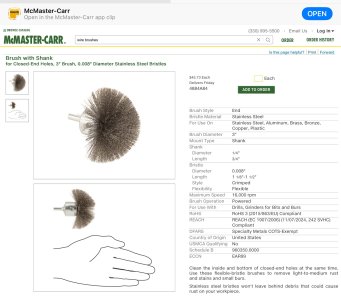DumbStudent
Member
Hi. I'm thinking of planning to potentially and design a hydraulic cylinder that I may or may not end up actually making. (I'm tryna make a hydraulic cylinder). I'm going for a telescopic single acting one, and so far it's looking like there'll be a 3" x 0.25" (length TBD) 1026 MS DOM tube that another piston needs to slide in and out of.
Anyways for the cylinder itself, I'm concerned about cleaning the inside of it enough for a piston to be sliding around. I don't think my hands will fit in that. I was originally considering getting alloy steel or stainless steel, but those looked way too expensive. I also need to weld a few random things to it like the base and fittings.
Currently, my plan is to clean weld surfaces + weld + machine + whatnot, then dunk in vinegar to remove mill scale and whatnots, then stick some scotch brite or sandpaper on a stick and try to scrub the insides, then electroplate with nickel.
Please flame this plan. I have no idea what I'm doing. And if you have any tips on how to clean the inside of a MS cylinder that'd be amazing. Thanks.
Anyways for the cylinder itself, I'm concerned about cleaning the inside of it enough for a piston to be sliding around. I don't think my hands will fit in that. I was originally considering getting alloy steel or stainless steel, but those looked way too expensive. I also need to weld a few random things to it like the base and fittings.
Currently, my plan is to clean weld surfaces + weld + machine + whatnot, then dunk in vinegar to remove mill scale and whatnots, then stick some scotch brite or sandpaper on a stick and try to scrub the insides, then electroplate with nickel.
Please flame this plan. I have no idea what I'm doing. And if you have any tips on how to clean the inside of a MS cylinder that'd be amazing. Thanks.

